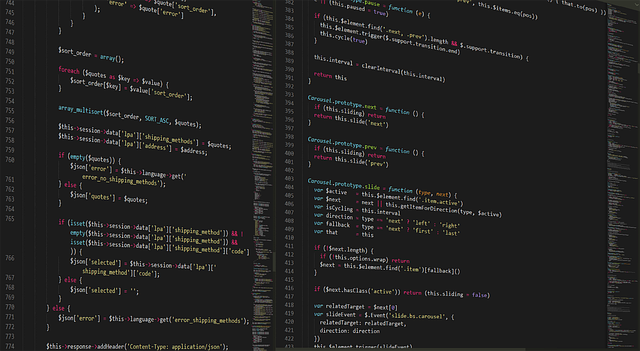
Continuous testing, what a wonderful world! It's growing in popularity (and necessity) every day as the digital environment changes faster than our developers can keep up. This is especially true with web applications. As customer expectations rise and technology advances, our ability to create software that meets those expectations increases proportionally.
However, this faster development pace can leave traditional software testing teams often unable to adapt to the newer, more agile way of developing software. These teams are confused about how much testing they should do during the development phase, what tests they should write, what tests to execute, and how to execute them if they want acceptance in the market.
This article will walk through how continuous testing and best practices can help us improve website performance, track the level of engagement our visitors have with our website's content, and, most importantly, save us time.
Continuous testing involves executing automated tests as part of the software delivery pipeline. This helps obtain feedback on the business risks associated with a software release candidate as rapidly as possible.
It is an integral part of software development that ensures a continuous delivery process. Teams can quickly identify and fix software errors by running tests throughout the development cycle. However, continuous testing is more than just a best practice - it's also a requirement for many organizations. Many companies have turned to the best continuous testing tools to ensure quality and compliance.
These tools provide automated testing at scale, allowing teams to test more effectively and efficiently. However, before implementing a continuous testing solution, it's important to understand the key features and benefits.

Here are 14 key points to consider when it comes to continuous testing strategy:
1. Continuous testing is an approach to software development where you integrate Quality Assurance (QA) activities throughout the software development cycle.
2. Continuous testing can help in improving the quality of software by identifying defects early in the development process.
3. It can also help to speed up the software development cycle by reducing the need for rework and feedback loops.
4. To effectively achieve continuous testing, you must implement it early in the software development process.
5. You must view continuous testing as a team effort, with everyone playing a role in ensuring quality.
6. One of the key benefits of continuous testing is that it can help to reduce the risk of software errors by identifying them early on.
7. Continuous testing can also help to improve the software development process by providing feedback that testers can use to improve the code. 8. For the continuous testing process to succeed, testers must support it with a robust test automation infrastructure.
9. Continuous testing requires a shift in thinking for developers and testers, as they must now work together to ensure quality.
10. Continuous testing is not a silver bullet and will not solve all of your software quality issues.
11. Continuous testing can help to improve the quality of your software if you use it correctly.
12. Many different tools are available to help with continuous testing, so choosing the best continuous testing tool for your needs is important.
13. Continuous testing is an important part of the software development process, but it's not the only thing you need to consider.
14. Many other factors contribute to software quality, so consider them when planning your quality assurance strategy. Automated and continuous testing tools are vital for successful continuous testing.

Here are some ways to perform continuous testing:
Manual approach: In an ideal world, you would have adequate test coverage in place for all your applications, so each time a change occurs, you could run a test suite and identify any failures. Unfortunately, our world isn't perfect; we live in the real world.
Test suites may not be fully developed or automated. In these cases, it's important to have a well-defined process so that all changes properly pass regression testing before releasing them into production.
Automated approach: You can automate running tests with a continuous integration server as the test automation tool. Every time there is a change, the testers run the tests automatically and report the results. This approach can save time and ensure proper testing of changes before releasing them into production.
Regardless of the approach you take, continuous testing helps to ensure that software is of high quality and you can release it with confidence.

There are two primary reasons why continuous testing is crucial to successful agile development: It reduces risk and increases speed. With continuous testing, both of these goals are achievable.
Here's how continuous testing can help your organization improve its products while also reducing development costs:
Testing early and often in the software development life cycle (SDLC) enables organizations to identify defects early in the process before they become expensive and time-consuming to fix.
This means that the defects you identify are less complex and cheaper to fix than if you find them late in the SDLC or post-production. In addition, by early testing, you can avoid the need for rework, which can be both costly and time-consuming.
Continuous testing also helps speed up the software development process by providing immediate feedback about the code quality. Testers can use this feedback to make changes and improve the code before releasing it to production.
Continuous testing allows all development team members to have a clear understanding of the quality of the code at any given time. Team members benefit from improved communication and collaboration due to this transparency.
It also enables developers to identify areas of the code that need improvement quickly. In addition, by sharing test results with stakeholders, you can get their feedback and input on the quality of the code.
This collaboration between developers, testers, and stakeholders helps to ensure that everyone is working towards the same goal: delivering high-quality software.
Ensuring that software is of high quality is essential to satisfied customers. By continuously testing code throughout the software development process, you can be confident that the code is error-free and meets customer expectations.
This, in turn, leads to happy customers who are more likely to continue doing business with your organization.

The role of a tester is truly an exciting one. You get to break things, find bugs, and then fix them. Sounds like a thrilling ride? Well, it is! But this makes the life of a tester more demanding than ever.
Continuous testing has become a necessity in the digital age. The development speed has increased, so the cycle time per release is much lower. This means that testers will have to work in an agile environment where they must continuously test.
Continuous testing requires absolute automation that works with or without human intervention. The previously tested code can be re-tested after every new code commits without wasting time and effort on testing the same code repeatedly.
You cannot perform continuous testing without incorporating test automation into your pipeline. After all, you need to automate your tests so that you can run them automatically after every new code commit. Automation also reduces human error and helps you detect bugs faster and earlier in the SDLC.
One of the most effective methods to ensure your app or website performs seamlessly across all devices and browsers is carrying out real device cloud testing early in the development process. This way, you will be able to catch bugs or issues related to compatibility early on and save you time, effort, and money in the long run.

When writing your test cases, base them around common user journeys or scenarios. This will ensure that you cover all the important functionality and ensure that your app or website is user-friendly.
Many great open-source testing tools can help you with continuous testing. Some of the most popular ones include Selenium, Appium, and JUnit. You can access these tools for free and have a large community of users who regularly contribute to improving them. If the free tools don't have everything you require, consider upgrading to more comprehensive and easier to use tools such as Scriptworks.
There are many benefits of using a cloud-based testing platform. For one, it's more cost-effective as you only pay for what you use. Secondly, it's more scalable and flexible, so you can easily add or remove users as needed. And lastly, it provides you with access to a wide range of devices for testing.
These are some of the best practices you should follow for continuous testing. Implementing these practices will help you improve the quality of your software and ensure a smooth user experience.

It's important to understand that continuous testing isn't simply a matter of automating tests that you would otherwise perform manually. Instead, it means thinking about how to design, develop, and deploy applications so that you can automate tests as part of the process from inception through implementation.
To implement continuous testing properly, your organization needs to adopt a comprehensive DevOps strategy across all levels of the application lifecycle.
It is common for organizations to focus on tools first rather than addressing organizational culture or infrastructure. But if you don't have the right people to collaborate effectively and use your tools efficiently, it won't matter what your tools can do or how much money you've spent on them.
One of the most important aspects of continuous testing is test data management. When you're running tests continuously, you need to have a way to quickly and easily create and maintain accurate test data.
This can be a challenge, especially if your application is large and complex. You need to ensure that your test data represents the real-world data that your application will encounter.
There are a few different approaches you can take to achieve the above:
Build your test data management system: This option gives you the most control over your test data but is also the most time-consuming and expensive.
Use a commercial test data management system: This is less expensive and easier to implement than building your system, but you'll have less control over your test data.
Use a cloud-based test data management system: This is the easiest to implement and provides you with the most flexibility.

Another important aspect of continuous testing is the use of virtualized environments. When you're running tests continuously, you need to be able to quickly and easily create and destroy test environments. This can be tricky if your application is large and complex.
Virtualized environments allow you to quickly and easily create and destroy test environments. This can be a great way to save time and money when running tests continuously.
There are a few different types of virtualized environments:
Virtual machines: This software program allows you to run a separate operating system on your computer.
Containers: A container is a standard unit of software that packages up code and dependencies, so the application runs quickly and reliably from one computing environment to another.
Cloud-based virtual environments: Cloud-based virtual environments are a great way to save time and money when running tests continuously.

When you're running tests continuously, you need to be able to automate as much of the process as possible.
Test automation can be a challenge, but there are a few different approaches you can take:
Record and playback: Record and playback are the easiest ways to automate tests. However, they're also the least reliable.
Scripted tests are more reliable than record and playback, but they can be time-consuming to create.
Keyword-driven tests are a good compromise between ease of use and reliability.
Another important aspect of continuous testing is performance testing/load testing. This will help you quickly and easily identify and fix performance problems.
There are a few different types of performance/load tests:
Stress tests: This design is to find the breaking point of a system.
Load tests: Helps testers to see how a system performs under normal conditions.
Soak tests: Helps in finding out how a system performs over an extended period.

Pipeline orchestration is managing and coordinating the execution of tests in a continuous testing pipeline.
A continuous testing pipeline is a set of automated tests run in sequence. Each test in the pipeline depends on the results of the previous test.
There are a few different approaches you can take to pipeline orchestration:
Build your pipeline orchestration system: This option gives you the most control over your pipelines, but it's also the most time-consuming and expensive.
Use a commercial pipeline orchestration system: Here, you will spend less, and it is easier to implement than building your system, but you'll have less control over your pipelines.
Use a cloud-based pipeline orchestration system: This is the easiest option to implement and provides you with the most flexibility.
Software API testing involves testing APIs both directly and as a part of integration testing. Its purpose is to determine if they meet functionality, reliability, performance, and security expectations. Since APIs lack a GUI API, the message layer is the best place to perform the testing.
This testing is critical for automating testing because APIs now serve as the primary interface to application logic. Another reason is, GUI tests are difficult to maintain with the short release cycles. Frequent changes that come along with Agile software development and DevOps also play a role.
It is not a substitute for other testing like unit or functional testing. Rather, it complements them because you can use it at every stage of SDLC, from development to production support. Software developers can use it on multiple platforms like web, mobile, and even IoT (Internet of Things).

We know there are three goals for tests: They should find bugs, guide changes to the code, and provide fast feedback. How does a team go about writing tests that meet these goals and are good enough to be considered "continuous"?
One way is to use a test generator. A test generator inputs your source code and produces test cases as output. It works by analyzing the code's control flow (such as loops and conditionals) and data (input parameters and return values), then generating test cases that exercise different paths.
The process is more complex than this simple explanation might suggest, but the results can be impressive. A tool like this can generate hundreds or thousands of test cases in minutes.
Security testing is not limited to just the QA cycle or the final stages before production in continuous testing. Rather, it is part of every stage of the SDLC. Suppose a developer discovers a vulnerability during coding. They can address it then and there instead of waiting for testers or other developers to discover it later in the process.
At every stage of development, you run automated tests against new builds of a program to detect problems that might have come with recently added features or patches
It's important to remember that continuous testing isn't just about using automation to perform more frequent security checks; it's also about ensuring that your developers are writing secure code from the very beginning
Continuous testing is a methodology used to test software throughout the software development process. It aims to find bugs as early as possible in the development process so that testers can fix them before releasing the software to production.
This type of testing can be a daunting task. But with the right tools and best practices in place, it doesn't have to be. Follow these guidelines to make continuous testing work easy for your team and business. Are you using continuous testing as part of your software development process? Let us know how it's going in the comments below!
